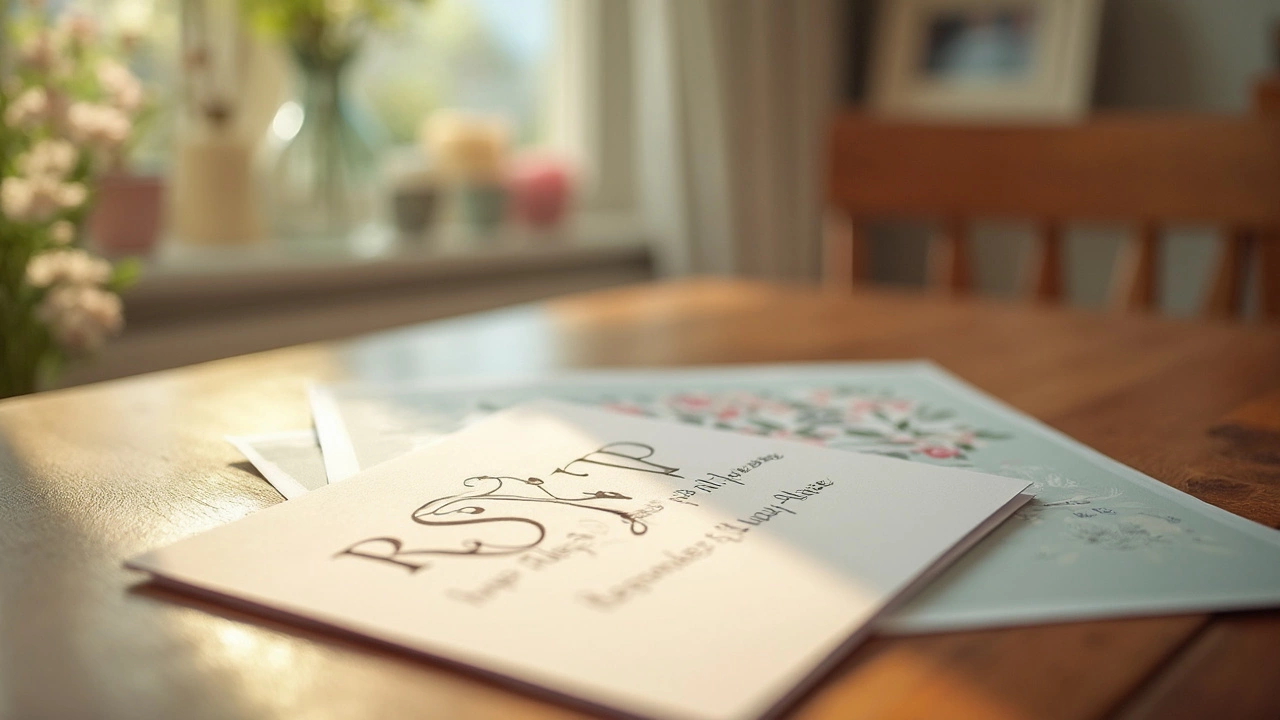RSVP Guide: Simple Tips to Handle Your Wedding Guest Replies
Planning a wedding means juggling a lot of moving parts, and the RSVP is the one piece that tells you who’s really coming. A solid RSVP system saves you from surprise costs, seating headaches, and late‑night stress. Below you’ll find practical steps you can start using today, whether you prefer classic paper cards or a modern online tool.
When to Send Your RSVP Request
Send your invitations about eight to ten weeks before the big day. That gives guests enough time to check calendars, book travel, and get back to you. Aim for a reply deadline that’s three weeks before the wedding. This window lets you lock in numbers, confirm catering, and finalize seating charts without pulling an all‑night panic.
If you’re using a digital RSVP platform, set an automatic reminder to go out a week before the deadline. A gentle nudge—"Just a quick reminder to let us know if you can make it"—keeps the response rate high and shows you respect everyone’s time.
Smart Ways to Track Guest Responses
Paper RSVPs are easy to lose, so create a simple spreadsheet the moment the first card arrives. Columns like "Name," "Attending," "Meal Choice," and "Plus‑One" keep everything in one place. For digital RSVPs, most services export a CSV file you can paste straight into Excel or Google Sheets.
Color‑code the rows: green for confirmed, yellow for tentative, red for declined. This visual cue helps you spot gaps fast. If you notice a lot of "maybe" responses, reach out personally—call or text—to get a firm answer.
Don’t forget the “plus‑one” rule. Only allow a plus‑one if the guest is married, engaged, or listed as a partner on the invitation. This keeps the headcount realistic and avoids awkward conversations later.
Word the RSVP request clearly on your invitation. A simple line like, "Please reply by 15 May 2025 – Email: [email protected] or call 01234 567890," removes any guesswork. If you prefer a card, include a pre‑stamped envelope and a line for the guest to tick "Accepts with pleasure" or "Regrets, cannot attend."
When the deadline hits, review your list and flag any missing replies. Give those guests a polite call or a quick text. Often a personal touch nudges a late response and shows you care.
Finally, thank everyone who replied, even those who can’t attend. A brief “Thank you for letting us know” email or text keeps communication friendly and may encourage future support, like a wedding gift or travel help.
By sending invites on time, setting a clear deadline, and using a simple tracking system, you’ll have an accurate headcount without the last‑minute scramble. Whether you go old‑school with paper cards or embrace a digital RSVP service, these steps keep the process smooth and stress‑free, giving you more time to enjoy the celebration itself.
RSVP Meaning: What the 'V' Stands For and Why It Matters
Learn what the V in RSVP means, why it's used on invitations, its French origin, and how RSVP etiquette has changed over time. Make your next celebration stress-free.
View MoreSave the Date vs. Invitation: Is It Rude to Send One Without the Other?
Ever wondered if it's rude to send a save the date but not follow it up with an invitation? This article breaks down wedding invitation etiquette, why save the dates matter, and what to do if your guest list changes. Learn practical tips on handling awkward situations and communicating with guests so everyone feels respected. Get clear answers to save yourself from sticky wedding drama.
View More
